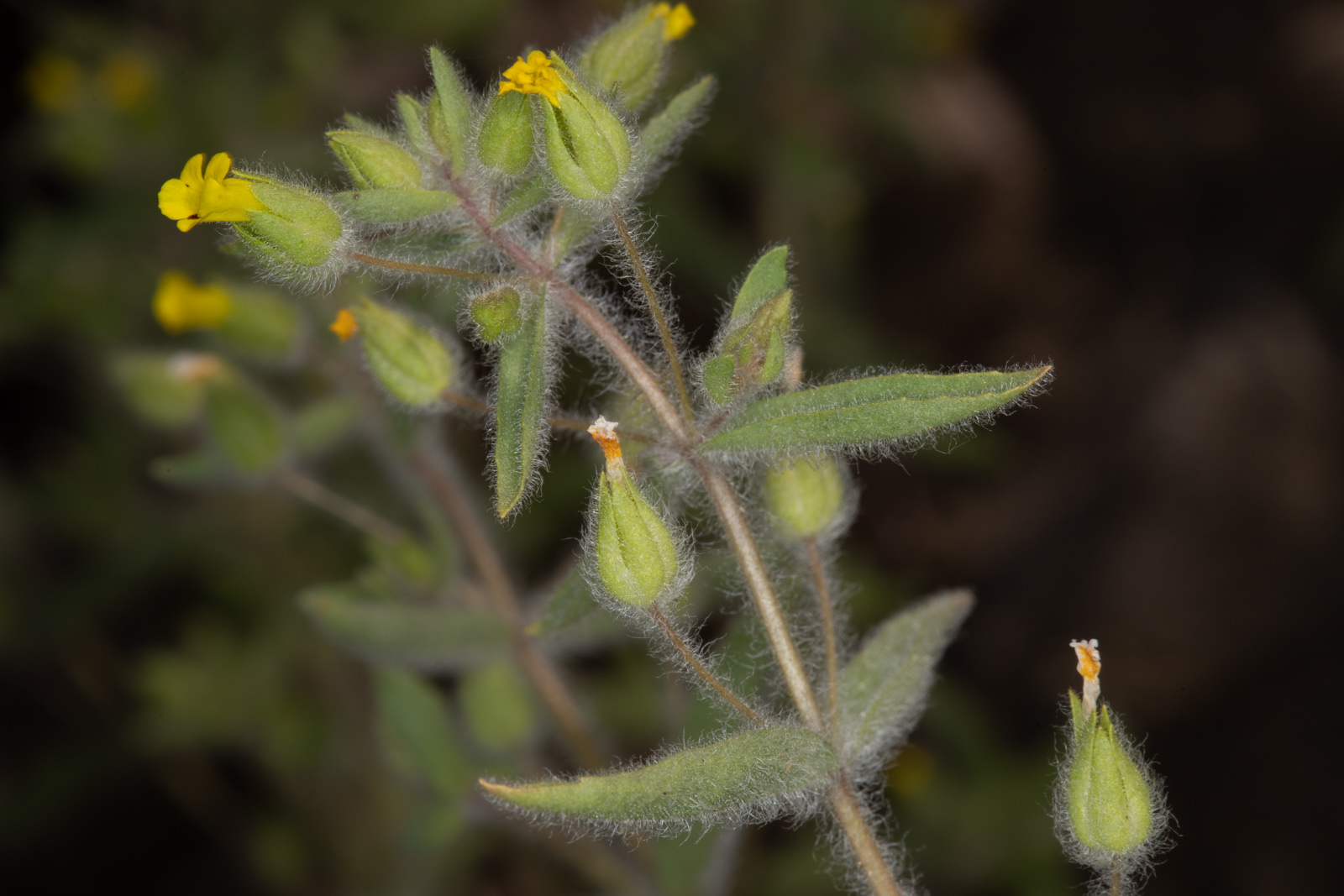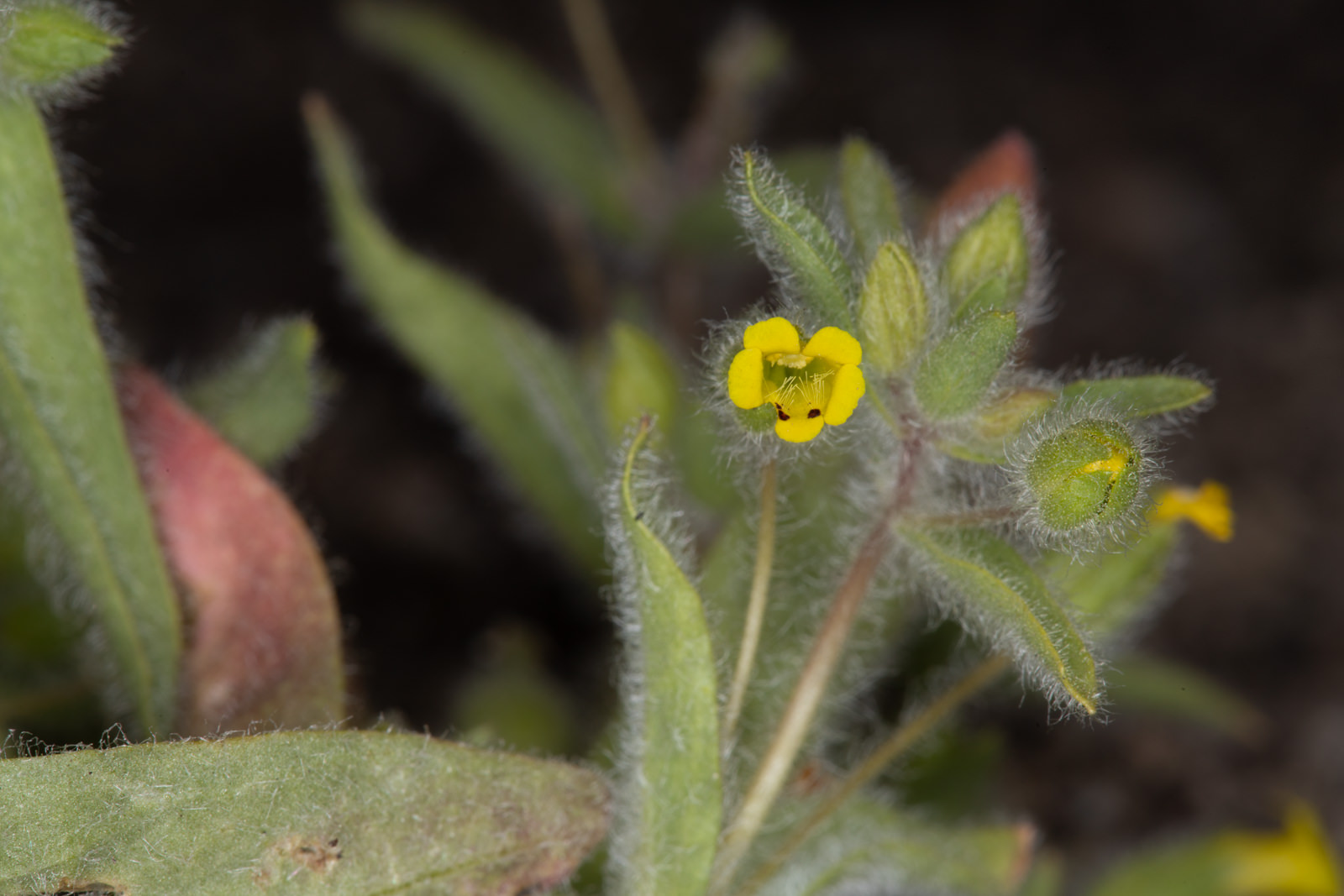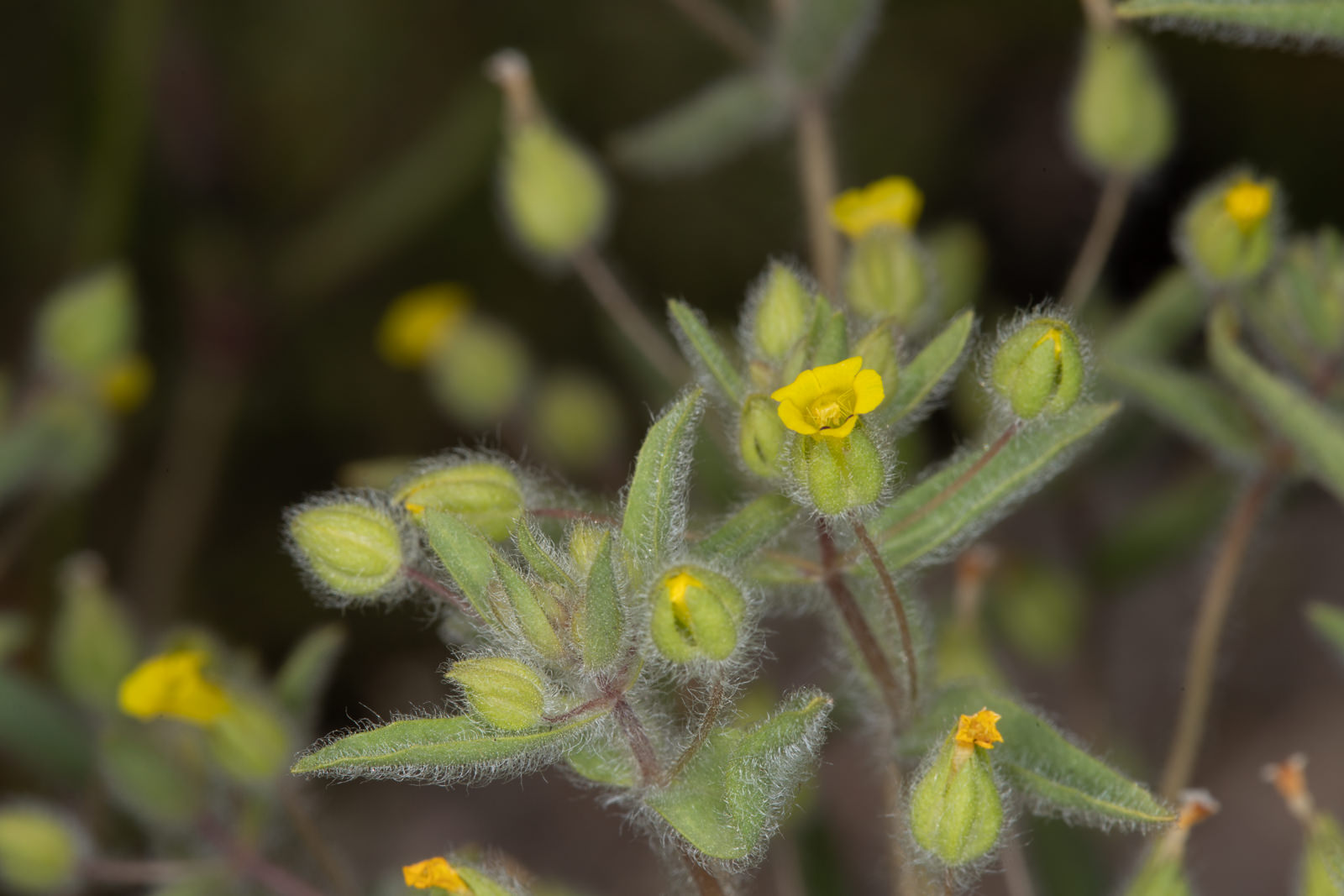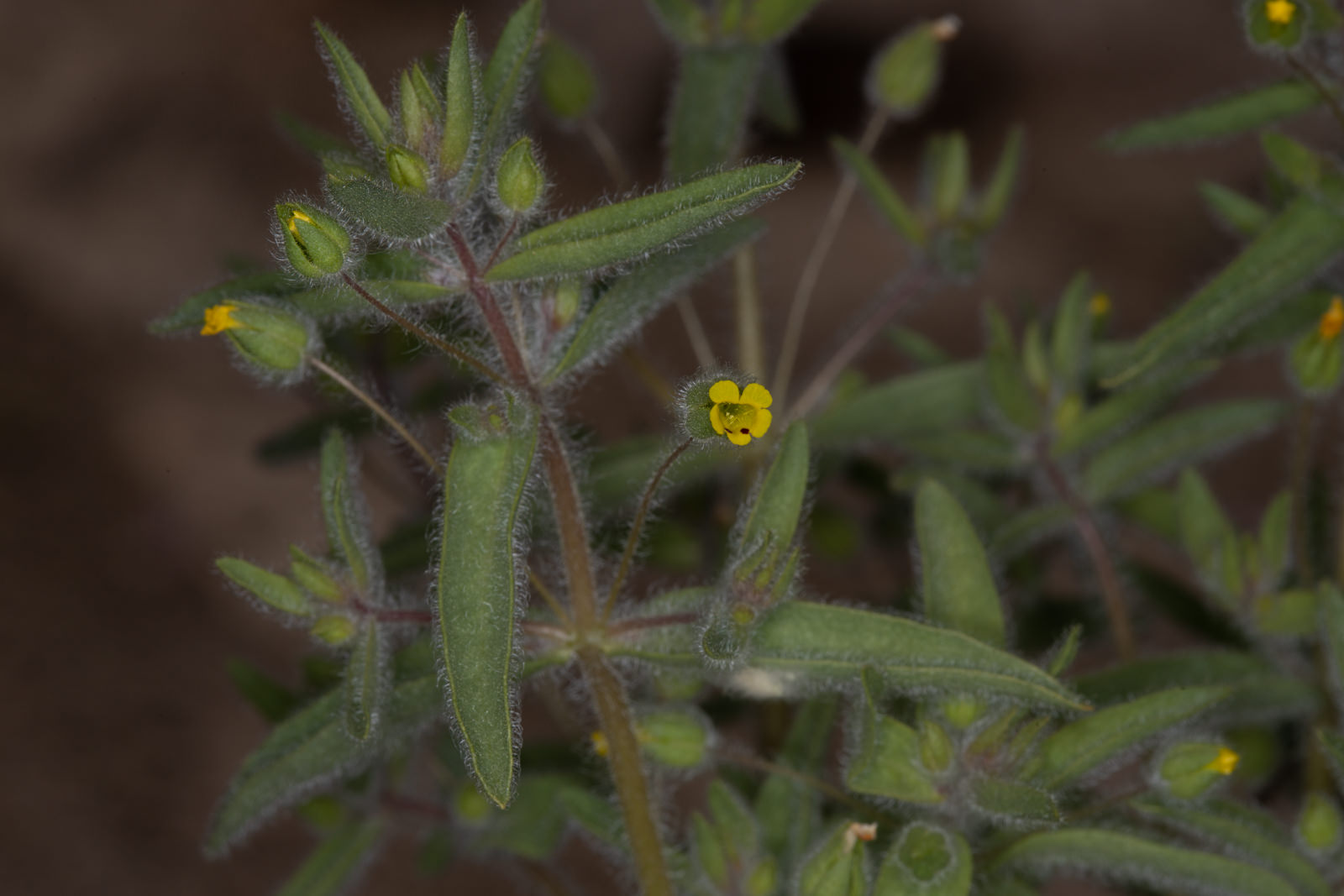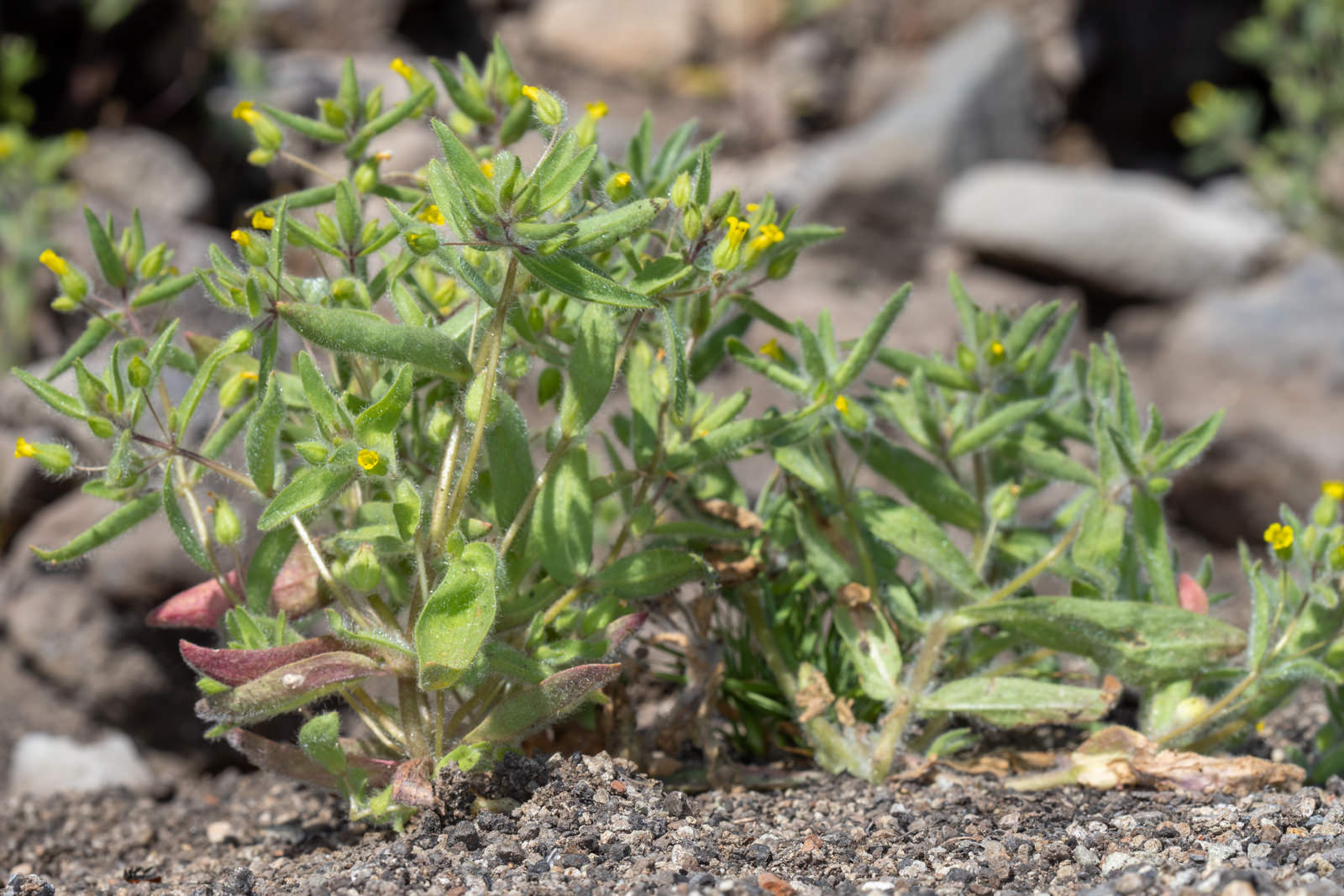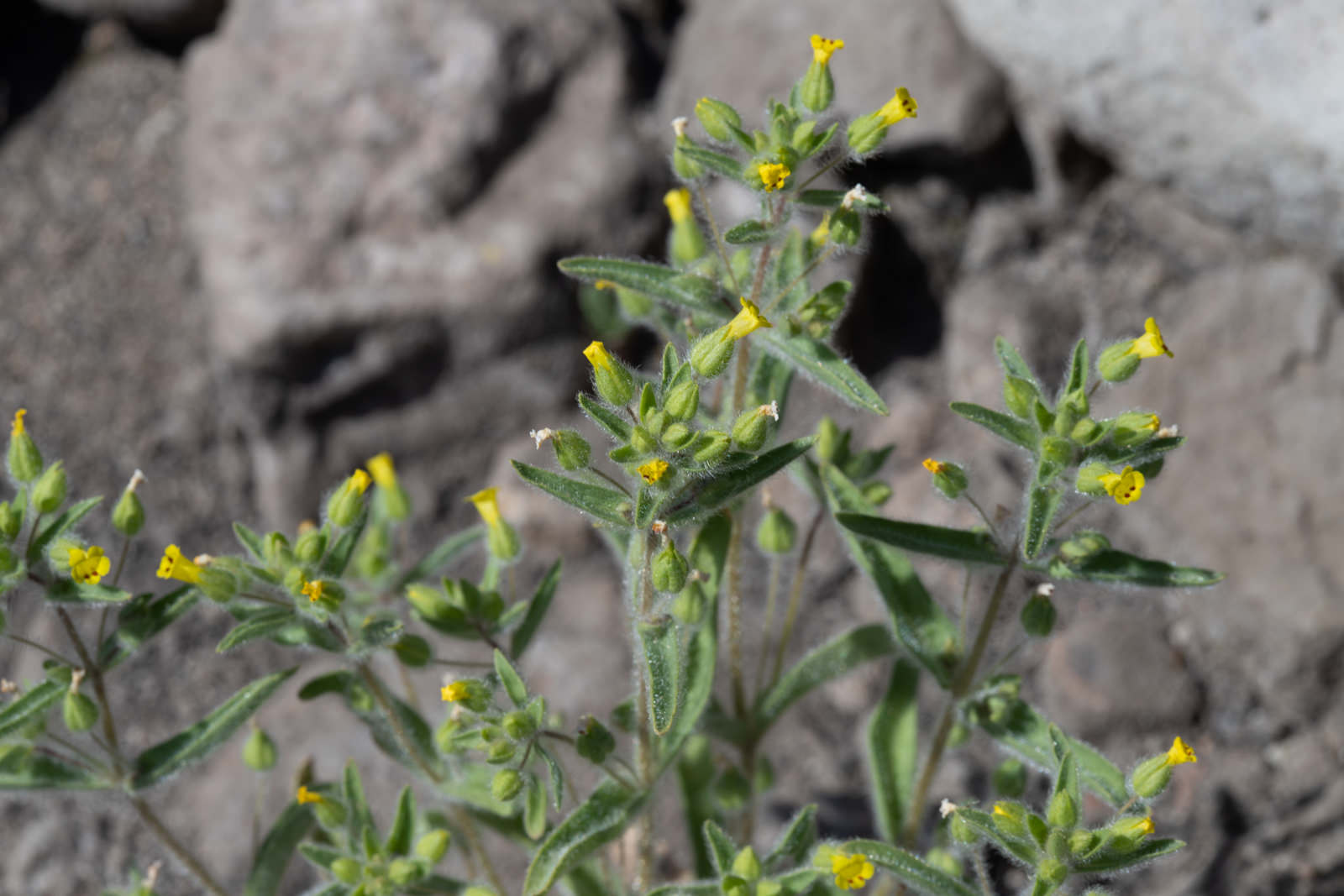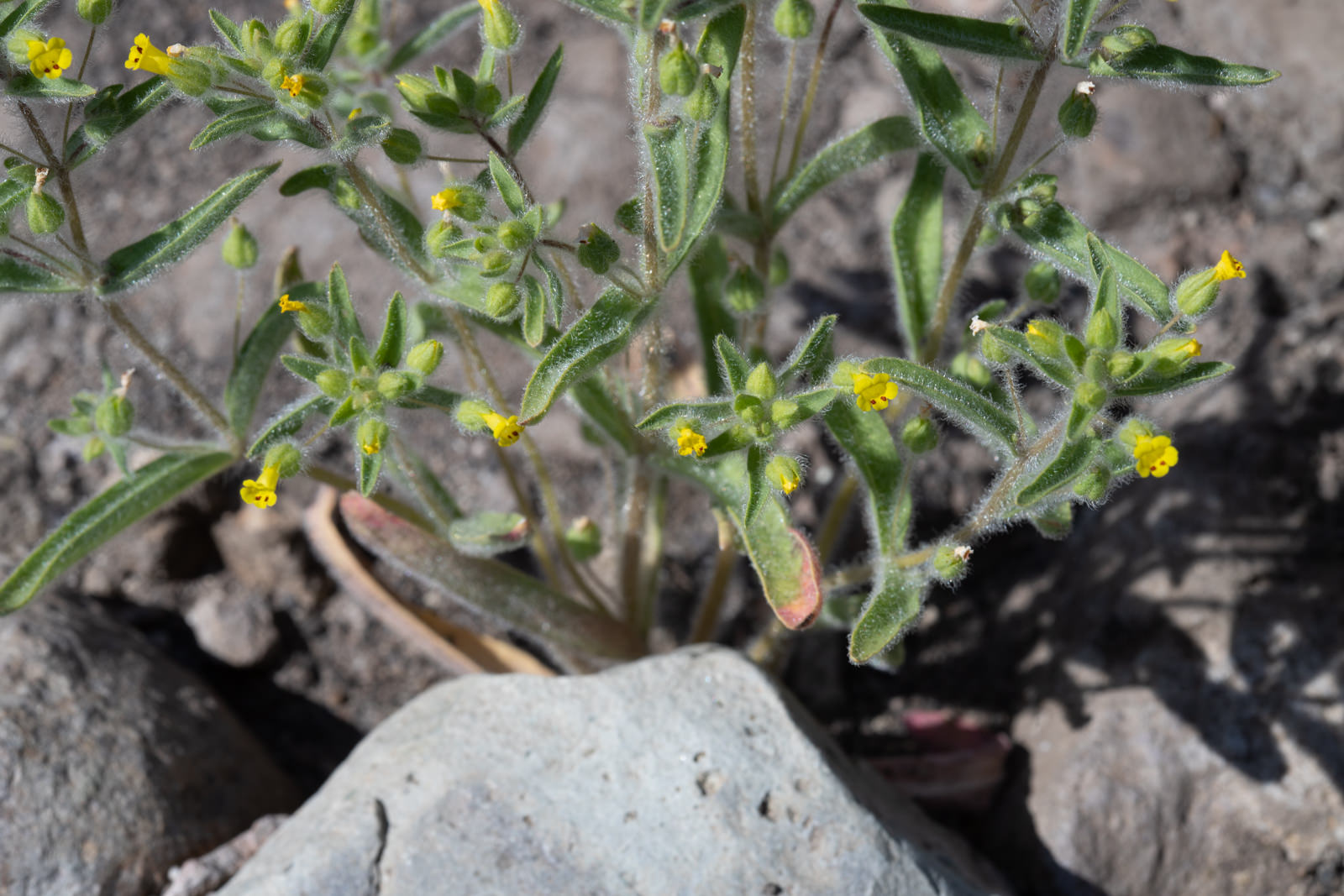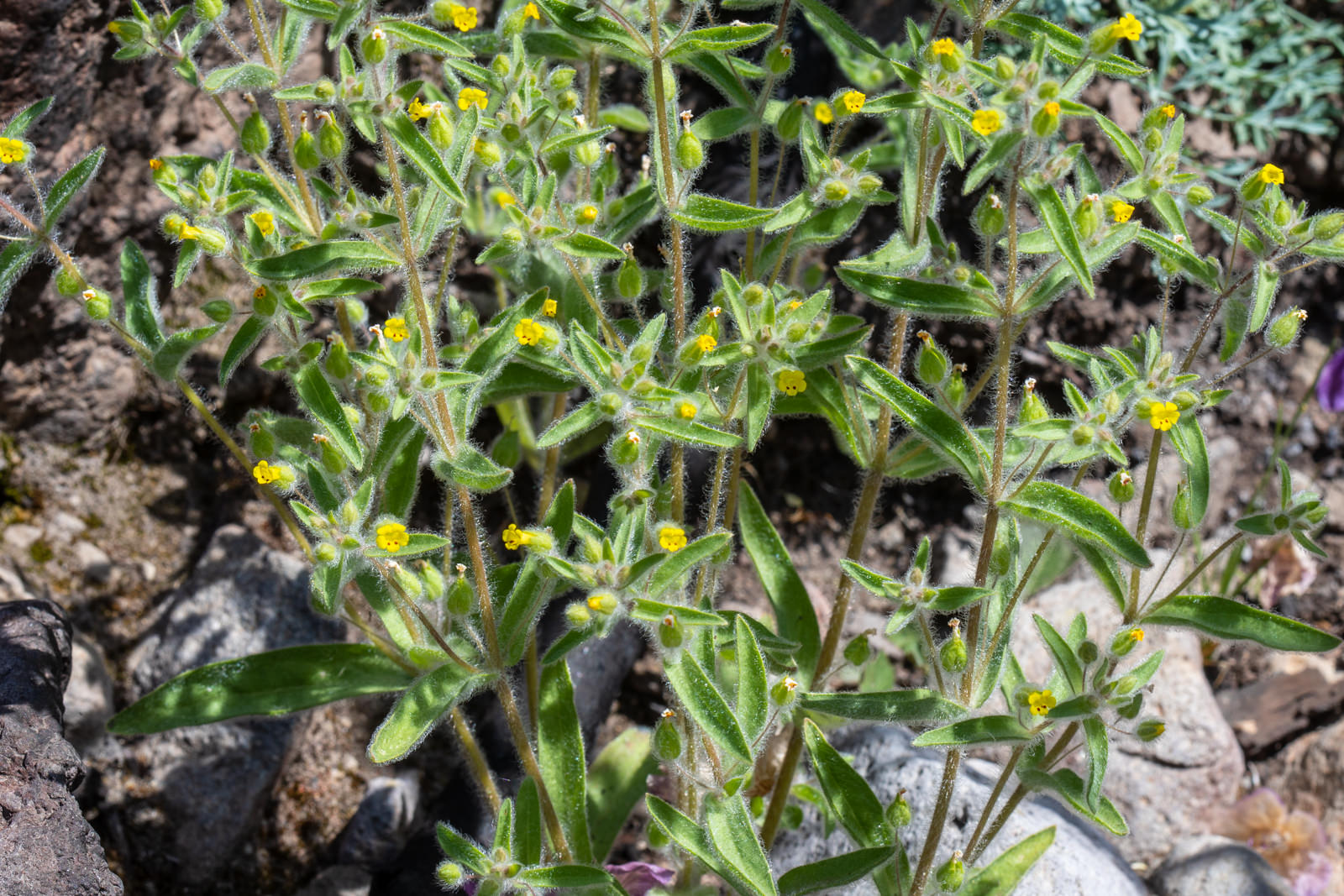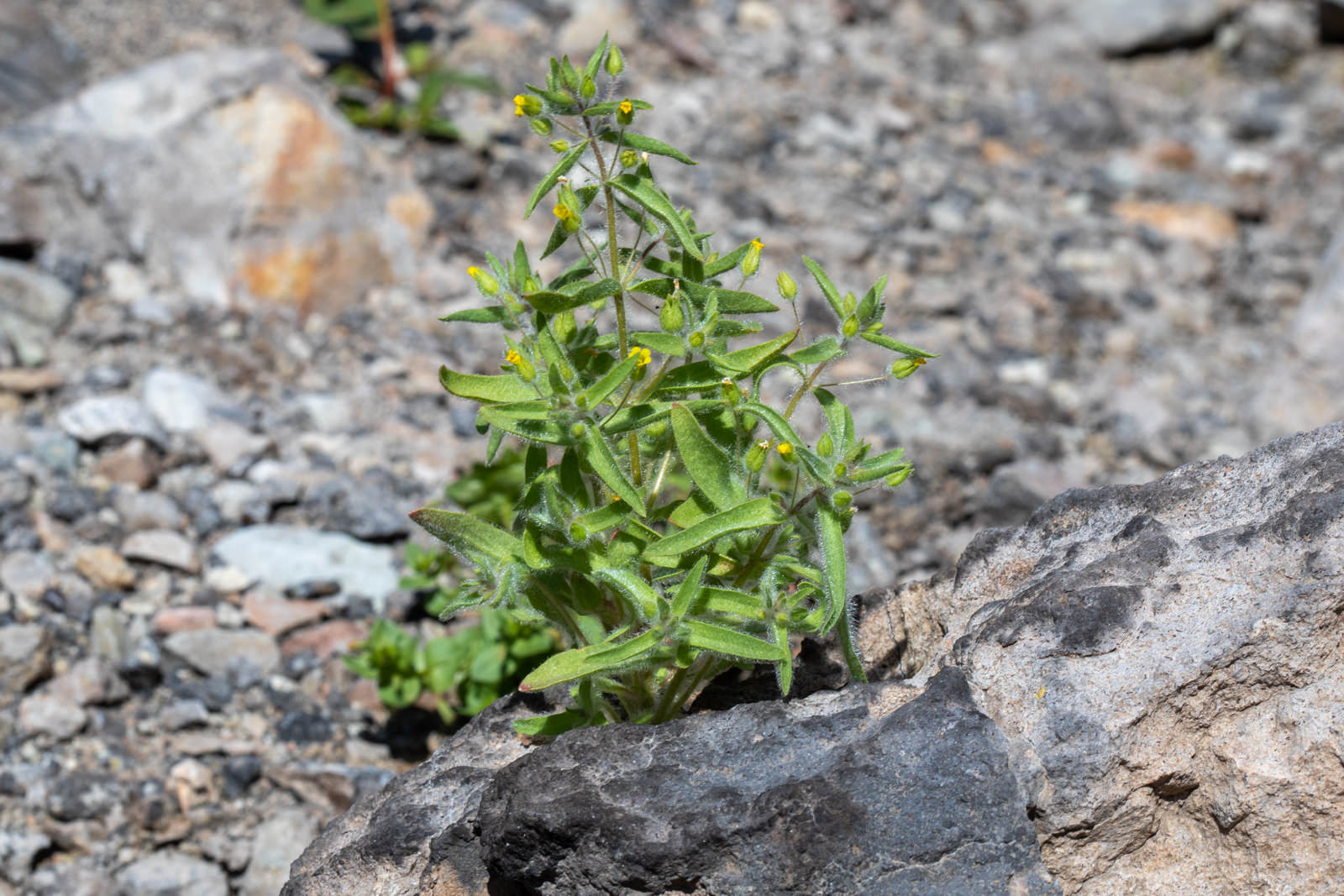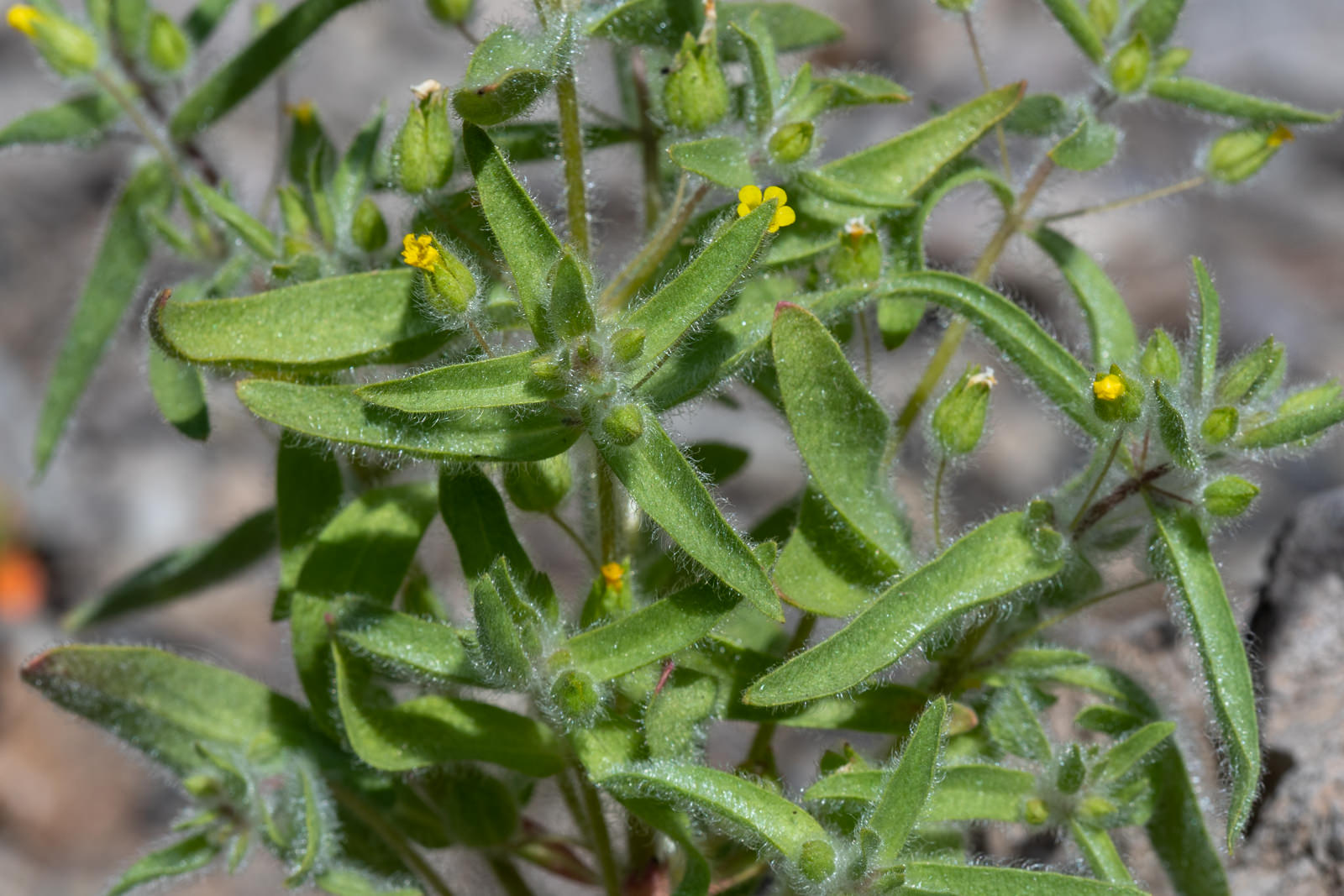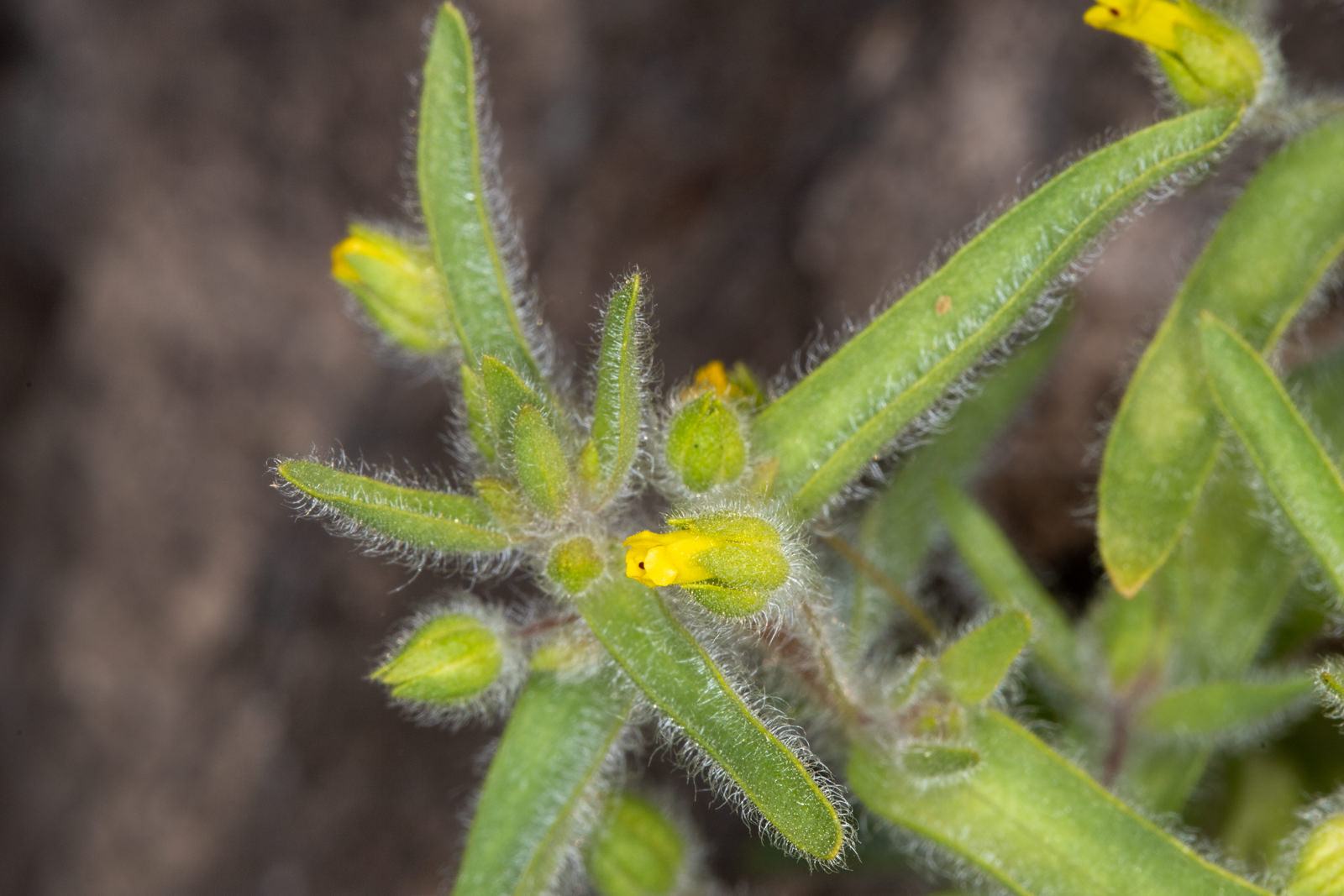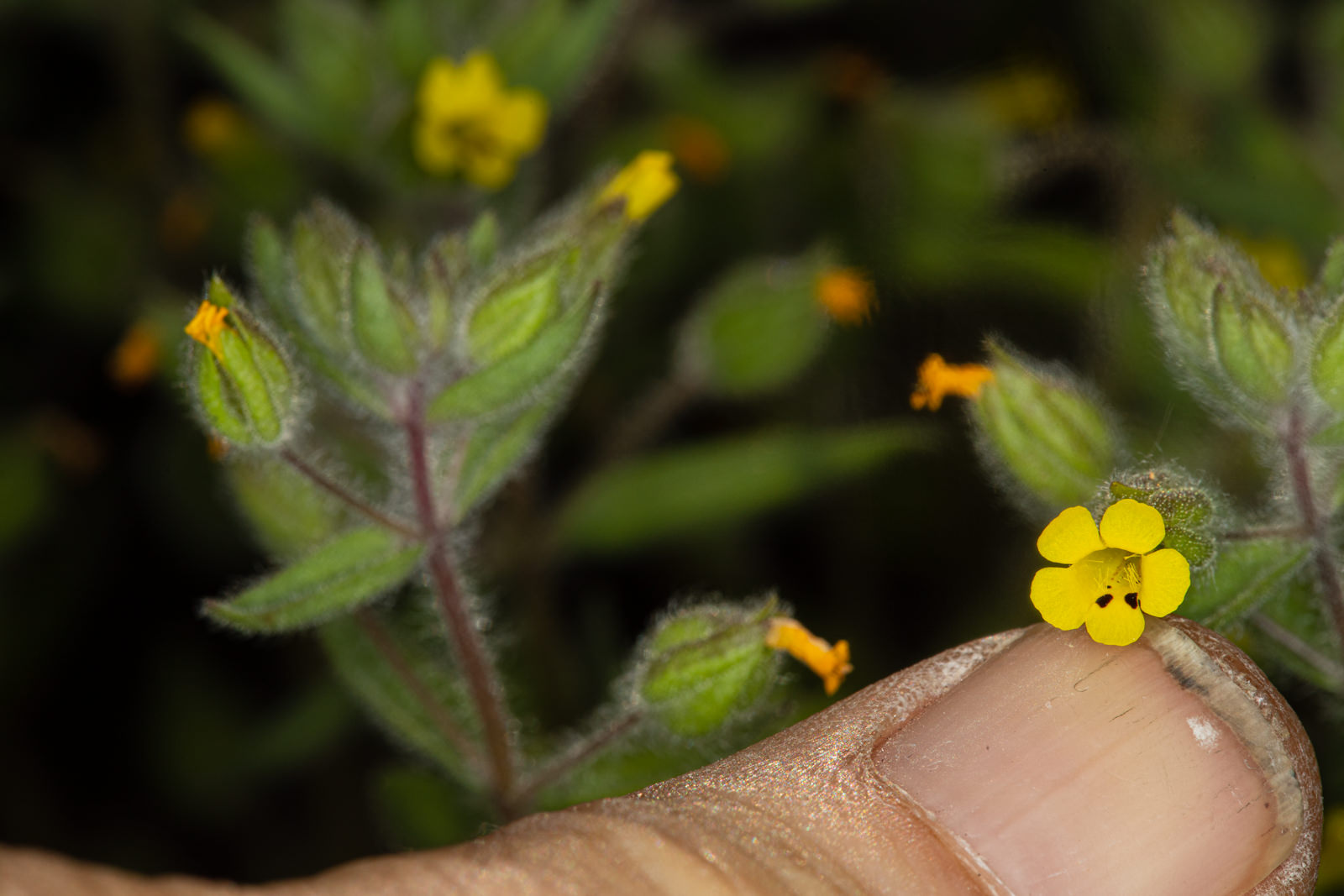Downy Monkey Flower
- Erythranthe pilosus
| Common Name(s): | Downy Monkey Flower |
| Scientific Name: | Erythranthe pilosus |
| Family: | Phrymaceae (Lopseed) |
| Plant Type: | Annual |
| Size: | up to 20 inches |
| Habitat: | riparian |
| Blooms: | April to August |
| Fire Response: | Germinate from Seed |
Erythranthe pilosus or as it is commonly known, Downy Monkey Flower, is among the tiniest of flowers you may come across in the Santa Monica Mountains. Native to the western states and Baja California at elevations up to 8,000 feet this plant is widespread but uncommon. Preferred habitat is along streams, seeps; typically moist sandy or gravelly soils. The Woolsey Fire provided many an opening for this plant in 2019. Other Monkey Flowers in our mountains grab your attention with their bright colorful flowers as you pass them by - this plant is going to require that you stop and give it your full attention when making an identification. Milt’ McCauley’s book says these flowers are rare. After the Woolsey fire I located them in two remote locations (in stream beds) - Trancas Canyon and along the Misha Mokwa trail.
This is an annual herb growing no higher 15 inches (35 centimeters). Coated densely in long hairs this plant’s name quite apt. Oppositely arranged, narrow lance to oblong shaped leaves are connected via a short pedicel (stem). The base of the flower is protected by a calyx of sepals and its yellow flower corolla is under a centimeter long. The corolla is divided into five rounded lobes at the mouth, and usually has two red spots. How small is the flower? The widest part of the corolla is approximately 1/4 inch (6 mm) wide and the length is 3/4 inch (18mm).
- Lance to oblong shaped leaves - Erythranthe pilosus
- Ovate and often rose colored - Erythranthe floribunda
Type of leaves
No Stems
- Stems - short to none -Erythranthe floribunda
- presence of two reddish dots - Erythranthe pilosus
Monkeyflowers have been an ideal candidate for research because the species contains a wide array of phenotypic, ecological and genomic diversity. Numerous studies have proven the experimental tractability of Mimulus in laboratory and field studies. As a result of study they have been grouped and regrouped which has resulted in the changing of names that many people first learned. Read this article. The biggest change is that the Mimulus species has been split into Diplacus and Erythranthe.
Monkeyflowers were once in the Mimulus genus. DNA studies in recent years have divided them between two genera, Diplacus and Erythranthe. Diplacus are characterized by flowers which are sessile (directly attached to the stalk) and have flowers that are persistent (remain attached) after flowering. Erythranthe have flowers with a pedicel (the stalk that connects the flower to the stem) longer than the calyx and which are deciduous (fall) shortly after flowering. Look at the soil around the base of the plant for flowers that have been shed.
The placement of this species has been complicated by its unique calyx, which is irregular and has weak angles and partially separated sepals (Argue, 1980). Greene (1886), von Wettstein (1891), and Grant (1924) elevated this species to the monogeneric Mimetanthe whereas other workers (Pennell, 1947, 1951; Vickery, 1969; Thompson, 1993) placed it in its own section within Mimulus (sect. Mimuloides). Read the full article
Link to Calflora.net - the best source of this fascinating information.
Name Origin: Diplacus: from the Greek di, "two, double", and plax or plakos, "a flat round plate, tablet or broad surface." Thomas Nuttall's 1838 publication On Two New Genera of California Plants in which he named this genus says "The generic name alludes to the splitting of the capsule, attached to each valve of which is seen a large placenta, and under its edges are found the slender subulate seeds." brevipes: with a short stalk.
Contributed by George Sherman
Featured Plants in the Phrymaceae (Lopseed) Family:
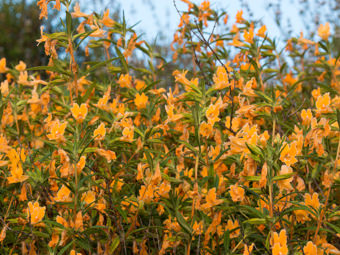
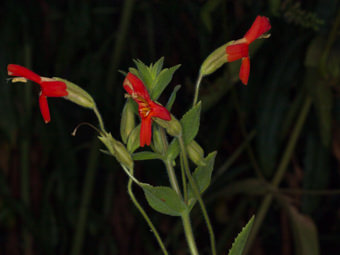
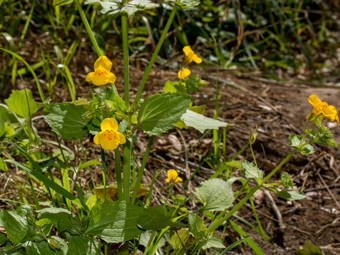
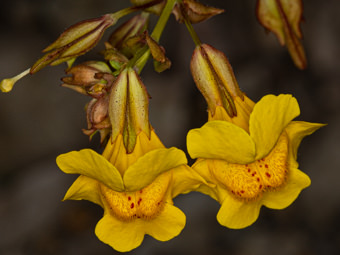
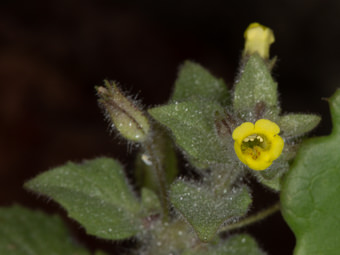
Last modified: August 21 2024 15:18:48.
Number of Images: 14
Image Size Total: 3,567,450
References:
Wildflowers of the Santa Monica Mountains, by Milt McAuleyFlowering Plants: The Santa Monica Mountains, Coastal and Chaparral Regions of Southern California, by Nancy Dale
Chumash Ethnobotany: Plant Knowledge Among the Chumash People, by Jan Timbrook
Leaf Shapes Primer - Botanical Terms for Leaves: - Link

